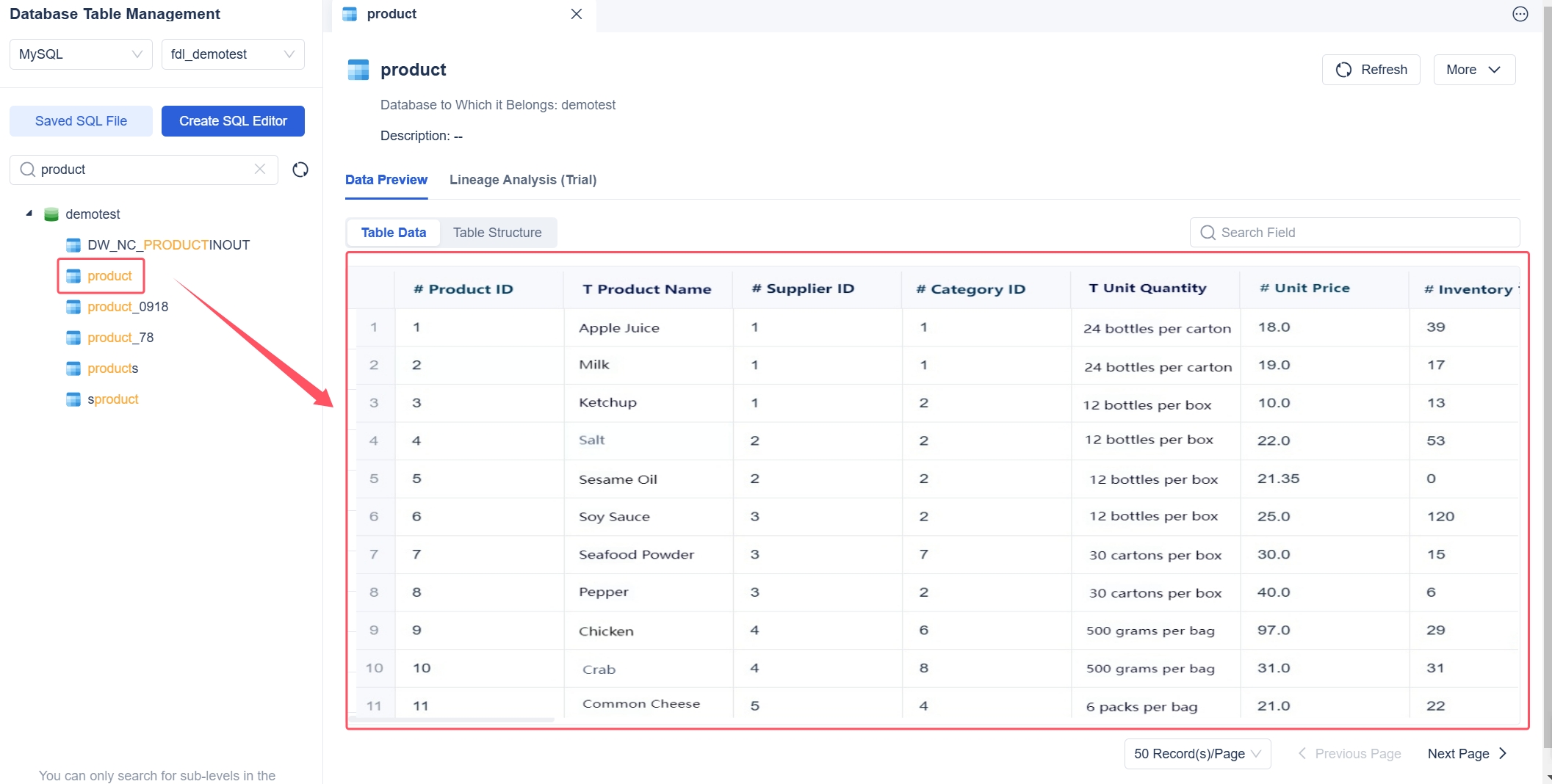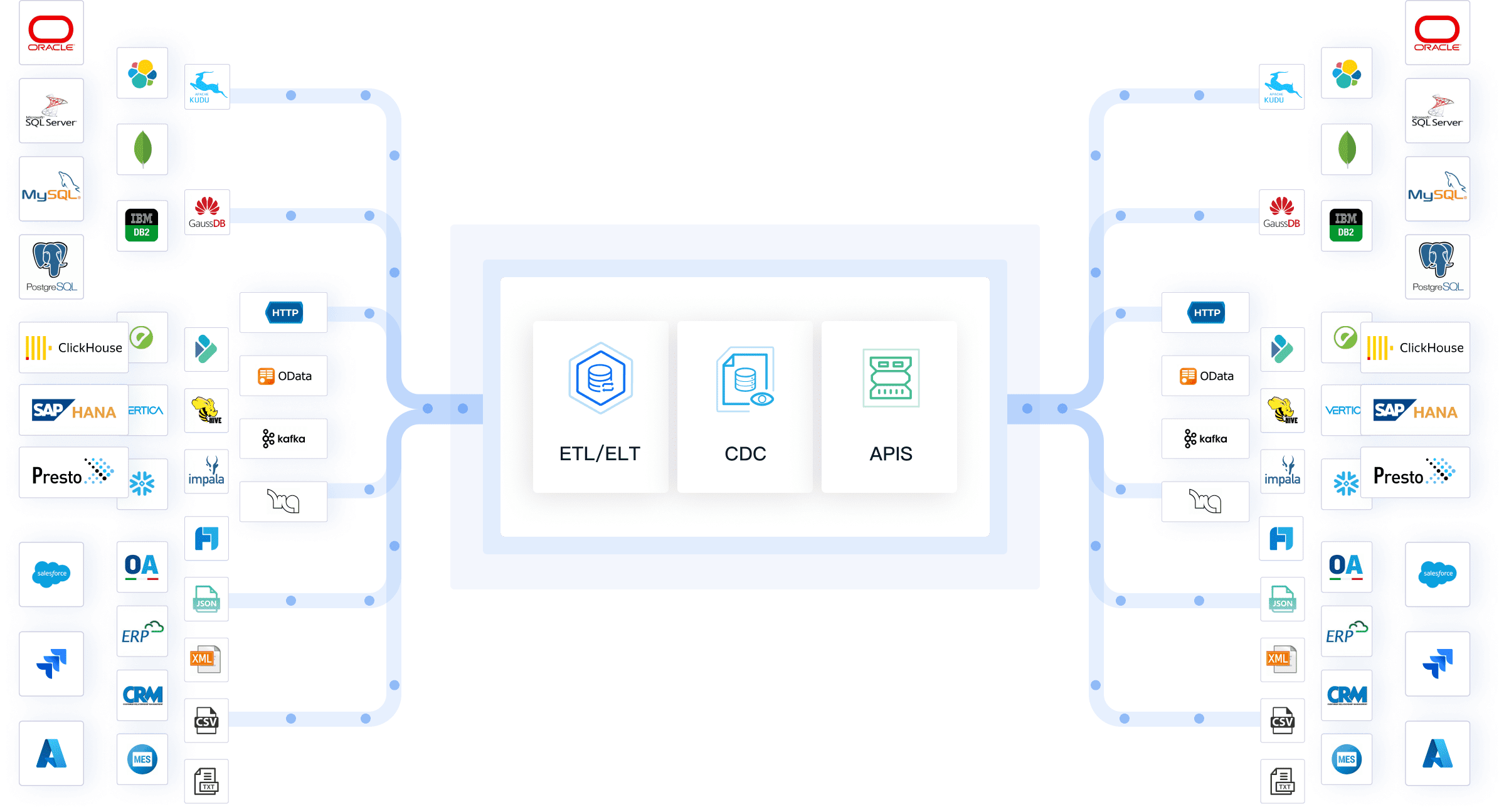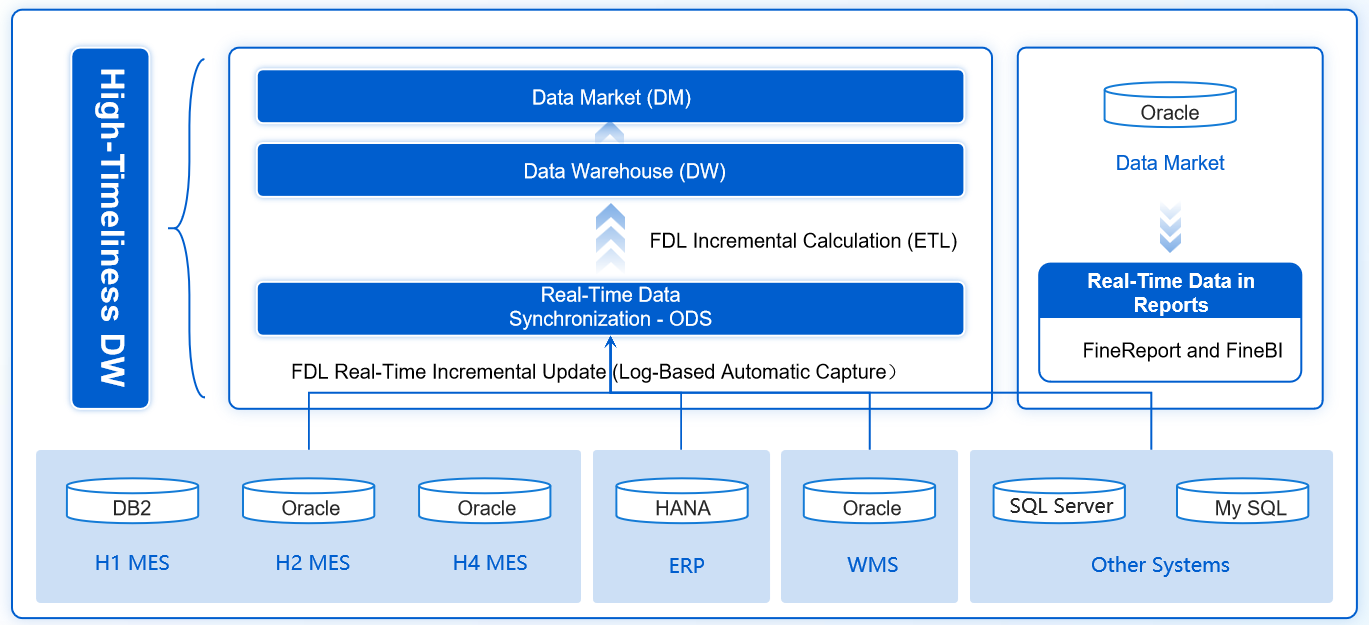Data asset management means you treat data as a valuable business asset. You use management strategies to organize, protect, and leverage data for growth. With more organizations relying on data, you face challenges like fragmented systems, data silos, and inconsistent management. Over 80% of enterprises struggle with complex data governance, and most use less than half of their structured data. Analysts spend 80% of their time finding and preparing data, which slows decision-making.

You need effective data asset management to unlock operational value, improve data accessibility, and reduce risk. Integrated solutions such as FineDataLink help you overcome these obstacles and support better management across your organization.
Data Asset Management Overview

What is Data Asset Management
You need to understand data asset management as a formal discipline. According to ISO 55013, data asset management provides guidance for managing data assets by applying asset management principles. You treat data as a core asset, not just as information stored in systems. This approach helps you support your management processes and distinguish between asset data and data assets. When you recognize data as an asset, you unlock new opportunities for growth and efficiency. You can organize, protect, and use data to drive business value. Data asset management gives you a structured way to maximize the potential of your data.
| Benefit of Treating Data as an Asset | Impact on Organizational Performance Metrics |
|---|---|
| High-quality data | Informed decision-making |
| Data democratization | Enhanced data accessibility |
| Breaking down silos | Improved business processes |
| Establishing data governance | Competitive advantage |
You see that companies with strong data asset management practices generate more value over time. Senior leaders who communicate the importance of data help everyone understand its role and improve performance.
Key Principles
You need to follow key principles to succeed with data asset management. These principles guide your management strategies and help you build trust in your data.
- Transparency: You keep data practices open and easy to understand.
- Accuracy and Quality: You maintain relevant and correct data.
- Data Security: You protect data from unauthorized access.
- Fairness and Equity: You avoid discrimination in data practices.
- Privacy Protection: You safeguard personal information.
- Accountability: You take responsibility for data management.
- Data Minimization: You collect only the data you need.
- Stakeholder Engagement: You involve relevant parties in governance.
- Continuous Monitoring and Improvement: You regularly evaluate and improve your data practices.
Tip: When you apply these principles, you create a strong foundation for data asset management. You build trust, reduce risk, and increase the value of your data.
You see that data asset management is not just about technology. It is about building a culture where data supports your business goals. You use management strategies to ensure data quality, security, and accessibility. You empower your organization to make better decisions and create more value from your data.

Why Data Asset Management Matters
Business Value of Data Asset Management
You unlock significant value when you use data asset management to guide your organization. Data becomes a strategic resource that drives innovation and supports better decisions. You see that high-quality data leads to more accurate insights and faster responses to market changes. When you manage data as an asset, you improve information integration and optimize resource allocation. You reduce uncertainty in innovation and expand your ability to create new products and services.
| Aspect of Innovation | Impact of Data Assets |
|---|---|
| Inputs | Enhance capacity for persistent innovation by improving information integration, optimizing resource allocation, and reducing innovation uncertainty. |
| Outputs | Accelerate knowledge recombination, expand innovation boundaries, and amplify market value. |
| Risk Management | Improve innovation risk management through advanced data-driven assessment models. |
You benefit from data asset management by creating a single source of truth. This unified approach ensures consistency and reliability in your decisions. You make data-informed decisions that support growth and help you stay competitive. Reliable, accurate, and timely data is essential for effective decision-making. You aggregate and analyze data from multiple sources to deliver organizational value.
| Evidence Point | Description |
|---|---|
| Data Quality | Data asset management enhances the quality, accuracy, and relevance of data, reducing the risk of erroneous insights. |
| Accessibility | It ensures that data is easily accessible, which speeds up decision-making processes. |
| Single Source of Truth | It creates a unified data source, ensuring consistency and reliability in decision-making. |
Risk and Compliance in Data Asset Management
You face many risks if you do not manage data assets effectively. Productivity losses occur when you spend time resolving data issues. Damaged brand reputation can result from data breaches. Compliance and legal hazards may lead to fines or lawsuits. Missed opportunities arise when flawed data prevents you from identifying market trends.
| Risk Type | Description | Mitigation Strategy |
|---|---|---|
| Productivity Losses | Time lost in resolving data issues leads to decreased productivity. | Implement data management software for quick issue resolution. |
| Damaged Brand Reputation | Data breaches can erode customer trust and harm reputation. | Use robust security protocols to prevent inconsistencies. |
| Compliance and Legal Hazards | Poor data management can lead to fines and lawsuits. | Ensure GDPR compliance and invest in security infrastructure. |
| Missed Opportunities | Flawed data can prevent identification of market trends and growth avenues. | Utilize data analysis tools to gain clearer insights. |
You must meet regulatory requirements to protect your organization. Data asset management helps you comply with standards such as ISO 55001, OSHA, and IFRS. These frameworks require you to align assets with business objectives, maintain safety, and ensure transparency in financial reporting.
| Regulatory Requirement | Description |
|---|---|
| ISO 55001 | Aligns assets with business objectives, ensuring operational value and consistency, complemented by standards for risk and quality management. |
| OSHA | Requires training for employees on equipment use and safety procedures, along with regular inspections and maintenance of assets to ensure compliance with safety standards. |
| IFRS | Ensures transparency in financial reporting and asset valuation, maintaining accurate financial accountability through standards like IAS 16 and IAS 36. |
You see that strong data asset management reduces risk, supports compliance, and builds trust with customers and stakeholders. You create a safer, more reliable environment for your data, which leads to better decisions and long-term value.
Core Elements of Data Asset Management

Data Discovery and Classification in Data Asset Management
You start your data asset management journey by understanding the importance of data discovery and classification. These steps help you identify, organize, and protect your data assets. You need to know where your data resides, what types you have, and how sensitive each category is. This process forms the backbone of effective management and governance.
You should follow industry best practices for data discovery and classification:
- Use specific labels for data sensitivity levels that align with your organization.
- Conduct a comprehensive data audit to identify types of data and their storage locations.
- Establish clear objectives and scope for your classification efforts.
- Sort data into distinct categories based on significance and sensitivity.
- Ensure compliance with privacy laws and regulations.
- Implement organization-wide data handling policies based on classification.
- Regularly validate classification outcomes to ensure data is correctly classified.
- Conduct regular reviews to adapt classification practices to evolving business needs.
- Involve key stakeholders from various departments in the classification process.
- Automate data classification where possible to enhance efficiency and accuracy.
- Train employees on data handling and classification to ensure compliance and understanding.
- Integrate data classification with overall data governance and privacy programs.
You need to understand your data landscape by identifying both structured and unstructured data. Set clear objectives and scope for your classification strategy. Conduct a data inventory and risk assessment to understand data sensitivity. Define clear classification categories tailored to your organization’s needs.
Modern organizations use automated tools to streamline data discovery and classification. Solutions like Velotix, Atlan, Forcepoint, and Fortra Digital Guardian automate data discovery and apply built-in policy rules. These tools help you tag, search, and protect your data efficiently. Automated data discovery identifies and categorizes all data across your organization, making your data asset management more accurate and reliable.
Data Security and Governance in Data Asset Management
You must prioritize data security and governance in your data asset management strategy. These elements protect your data assets and ensure compliance with regulations. You need to establish strong data policies and standards. Data quality management plays a vital role in maintaining accurate and reliable data.
Key components of a robust data security and governance strategy include:
- Data policies and standards
- Data quality management
- Data security and privacy
- Data lifecycle management
- Data stewardship
- Data architecture
- Data governance processes
- Data governance tools and technologies
You also need to focus on data classification and ownership. Risk management and assessment help you identify potential threats. Access control policies restrict unauthorized access. Compliance with regulations keeps your organization safe from legal issues. Incident response and recovery plans prepare you for unexpected events. Monitoring and auditing ensure ongoing protection and improvement.
You measure the effectiveness of your data governance initiatives by establishing key performance indicators (KPIs). KPIs allow you to assess and adjust your strategies. Metrics highlight your program’s effectiveness in areas like regulatory compliance and data quality. You track data accuracy, completeness, and consistency to ensure your data quality program delivers results.
Tip: Regularly review your data governance processes and update your management strategies to address new risks and business needs.
FineDataLink for Data Integration in Data Asset Management
You face challenges when integrating data from multiple sources. Data silos, inconsistent formats, and manual processes slow down your data asset management efforts. FineDataLink offers a solution that streamlines data integration, real-time synchronization, and ETL/ELT processes.

FineDataLink stands out among data integration platforms. It supports multi-source data collection, including relational, non-relational, interface, and file databases. You benefit from non-intrusive real-time synchronization, which keeps your business data up to date with minimal latency. The platform enables you to construct enterprise-level data assets at low cost, relying on APIs for interconnection and sharing.
| Feature | Description |
|---|---|
| Multi-source data collection | Supports various data sources such as relational, non-relational, interface, and file databases. |
| Non-intrusive real-time synchronization | Synchronizes data in multiple tables or the whole database, ensuring time sensitivity of business data. |
| Data service construction at low cost | Constructs enterprise-level data assets relying on APIs for interconnection and sharing. |
| Efficient intelligent operation and maintenance | Allows flexible scheduling of tasks and real-time monitoring, reducing O&M workload. |
| High extensibility | Built-in Spark SQL allows calling scripts such as Shell script. |
| Efficient data development | Equipped with a dual-core engine (ELT and ETL processes) for customized solutions. |
| Five data synchronization methods | Provides methods based on timestamp, trigger, full-table comparison, full-table increment, and log parsing. |
You use FineDataLink to connect to various data sources and process data throughout its lifecycle. The platform supports real-time incremental data synchronization from entire databases or multiple tables. You can schedule and manage tasks flexibly, which improves your data asset management efficiency.
FineDataLink features a low-code platform that simplifies complex data integration tasks. You can build APIs quickly, enabling seamless data sharing between systems. The platform ensures minimal latency in real-time data synchronization, making it ideal for database migration and real-time data warehouse creation. Timing data calculation and synchronization are core functions, supporting your ETL and ELT needs.
Note: FineDataLink helps you break down data silos and automate your data asset management processes. You gain a unified, high-quality data layer for business intelligence and analytics.
You improve your data asset management by leveraging FineDataLink's capabilities. You enhance data quality management, strengthen data governance, and ensure data security and privacy. The platform supports your data quality program and helps you maintain accurate, complete, and consistent data across your organization.

Data Asset Management Plan
Implementation Steps for Data Asset Management Plan
You need a clear process to create an effective data asset management plan. Start by identifying gaps and challenges in your current approach. Assess user needs to understand workflows and requirements. Develop a roadmap that prioritizes actions for implementation. Research the data asset management landscape and select the right system for your organization. Define user roles and responsibilities to support collaboration. Migrate files and assets to your new system in an organized way. Provide training and support to ensure everyone understands the new processes. Track your progress and adjust your plan as needed to achieve your goals.
- Identify gaps and challenges in your current data asset management strategy.
- Assess user needs and workflows.
- Develop a prioritized roadmap for your data asset management plan.
- Research and select the right data asset management system.
- Define user roles and responsibilities.
- Migrate files and assets to the new system.
- Train users and provide ongoing support.
- Track progress and refine your plan.
Best Practices for Data Asset Management Plan
You can maximize value by following data management best practices. Establish a data governance framework with clear roles for managing data quality and compliance. Conduct regular data audits to identify errors and maintain accuracy. Standardize data entry to ensure consistency. Integrate systems to eliminate silos and promote seamless data sharing. Monitor and improve continuously by setting KPIs and feedback loops. Automate processes where possible to reduce manual errors. Focus on real-time data for timely insights. Engage stakeholders to align efforts with organizational goals.
| Best Practice | Description |
|---|---|
| Establish a Data Governance Framework | Structured oversight with defined roles for quality and compliance. |
| Conduct Regular Data Audits | Identify errors and ensure accuracy and completeness. |
| Standardize Data Entry | Reduce errors through uniform processes. |
| Integrate Systems | Eliminate silos and promote seamless sharing. |
| Monitor and Improve Continuously | Use KPIs and feedback for ongoing improvement. |
| Automate Where Possible | Reduce human error and improve efficiency. |
| Focus on Real-Time Data | Provide up-to-date insights for better decisions. |
| Engage Stakeholders | Align efforts with organizational goals. |
Trends and Future Outlook in Data Asset Management Plan
You see new trends shaping the future of data asset management. Predictive analytics now supports proactive maintenance and risk reduction. Organizations adopt blockchain to enhance data security and integrity. Artificial intelligence transforms data asset management by optimizing processes and improving decision-making. AI acts as a co-pilot, guiding users and automating tasks. You benefit from a data-driven culture that values continuous improvement and collaboration. FineDataLink supports these trends by enabling real-time integration, automation, and advanced analytics. You can build a resilient data management strategy that adapts to new technologies and delivers long-term value.

Challenges and Solutions in Data Asset Management
Common Obstacles in Data Asset Management
You encounter several obstacles when you implement data asset management. Disconnected systems and data silos create isolated pockets of information. These silos make it difficult for you to integrate and share data across your organization. Inconsistent metadata practices lead to varying tagging standards, which makes locating data assets challenging. Limited data lineage complicates tracing the origins of data, affecting your ability to ensure quality and compliance. Manual processes introduce errors and bottlenecks, especially as your organization grows. Resource constraints often delay investments in essential data management infrastructure.
- Disconnected systems and data silos
- Inconsistent metadata practices
- Limited data lineage
- Manual processes and errors
- Resource constraints
You see how data silos and fragmented systems hinder effective data asset management. The following table shows the impact of these issues:
| Challenge | Impact on Data Asset Management |
|---|---|
| Data silos | Isolated data, extra steps for usability, inconsistent analytics |
| Fragmented systems | Inaccurate data, unreliable business decisions |
| Limited access to complete datasets | Partial data views, suboptimal decisions |
You must address these challenges to improve data quality, accessibility, and overall management.
Overcoming Challenges with FineDataLink in Data Asset Management
You can overcome many data asset management obstacles by using FineDataLink. The platform enables you to break down data silos, making data more accessible and easier to share. FineDataLink handles complex data formats, which simplifies integration across different systems. You benefit from enhanced data quality through real-time synchronization, ensuring accuracy and reliability. The ETL and ELT capabilities streamline integration processes, reducing manual effort and errors.
| Challenge | FineDataLink Solution |
|---|---|
| Data silos | Enables better data accessibility and sharing across systems |
| Complex data formats | Facilitates smoother integration with support for diverse formats |
| Data quality issues | Improves quality through real-time synchronization and validation |
| Integration complexity | Simplifies integration with advanced ETL/ELT capabilities |
You use FineDataLink to automate data management workflows, which reduces bottlenecks and improves efficiency. The platform supports real-time data integration, so you always work with the most current information. You can connect multiple data sources, maintain high data quality, and ensure compliance with management standards. FineDataLink helps you build a unified data layer, supporting better analytics and decision-making. You create a more resilient data asset management strategy by leveraging automation and integration.

Data asset management gives you a foundation for better decision-making and stronger business performance. When you use a strategic approach, you reduce bad data, improve communication, and drive productivity. You gain cost-effective storage and better governance. Organizations that focus on data asset management see real-time insights and improved compliance. To start, inventory your assets, assess their value, and develop clear management strategies. Review and optimize your data processes often. Explore solutions like FineDataLink to unlock the full value of your data and stay competitive.

Continue Reading About Data Asset Management
Enterprise Data Integration: A Comprehensive Guide
What is enterprise data and why does it matter for organizations
Understanding Enterprise Data Centers in 2025
Enterprise Data Analytics Explained for Modern Businesses
FAQ

The Author
Howard
Data Management Engineer & Data Research Expert at FanRuan
Related Articles

Top 10 Database Management Tools for 2025
See the top 10 database management tools for 2025, comparing features, security, and scalability to help you choose the right solution for your business.
Howard
Dec 17, 2025

Best Data Lake Vendors For Enterprise Needs
Compare top data lake vendors for enterprise needs. See which platforms offer the best scalability, integration, and security for your business.
Howard
Dec 07, 2025

Top Data Ingestion Platform Compared
Compare the top 7 data ingestion platforms, including real-time features, integration, scalability, and pricing to find the best fit for your business.
Howard
Dec 04, 2025



